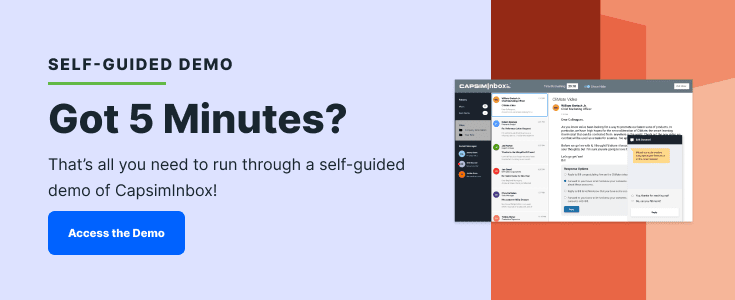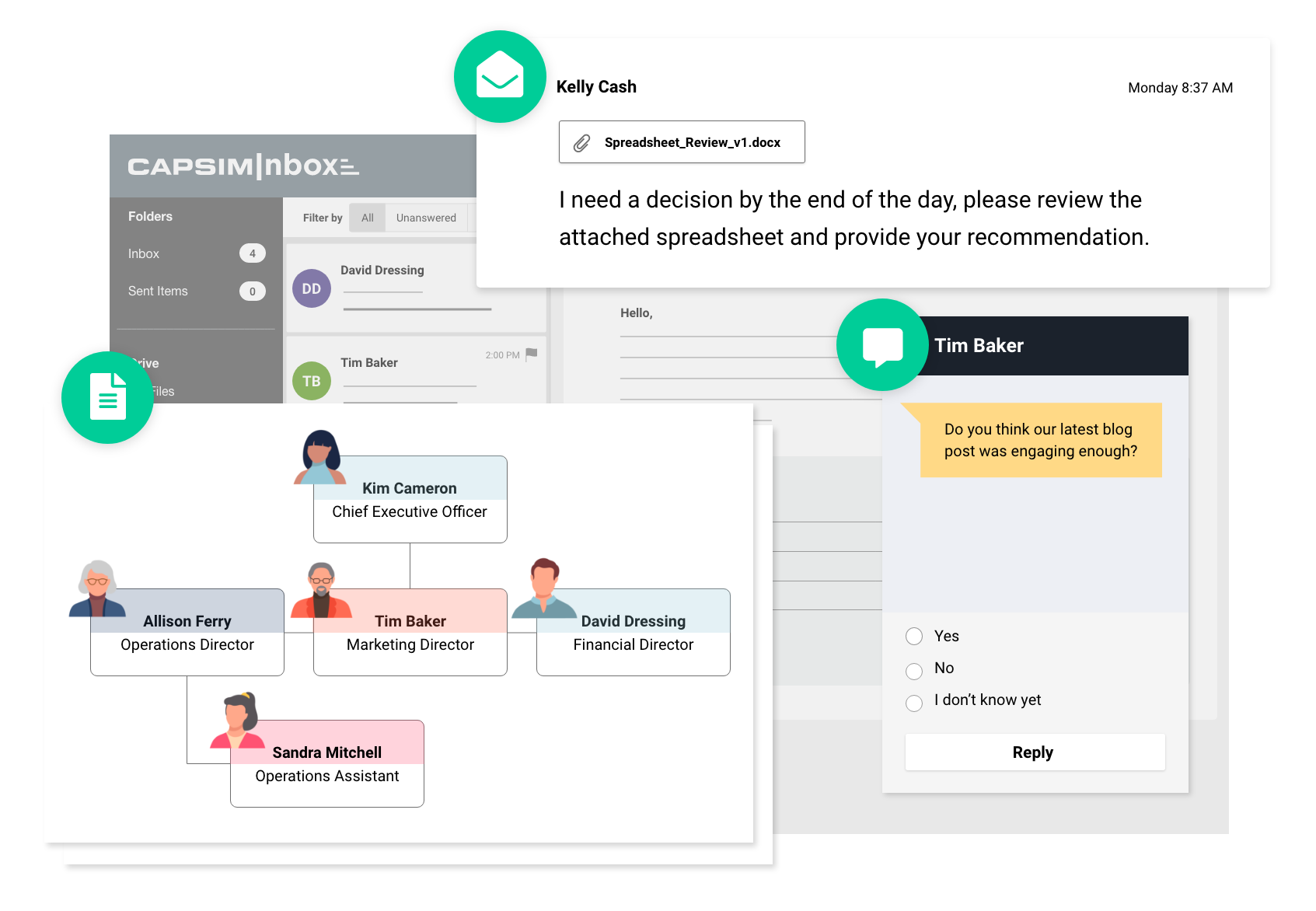How Much Does VR Soft Skills Training Cost?
September 15, 2021

Modern soft skills training technology shouldn’t break the corporate bank account.
Virtual reality (VR) is a relatively new technology, especially when it comes to soft skills training. VR can be an incredibly helpful tool to your L&D program because of the inclusion of real-world scenarios and experiences.
A common question about VR is, “How much does VR soft skills training cost?” Another question to consider: is VR the right decision for my company? As an investment, VR can be expensive, and the last thing we want is for you to overpay or waste money on a solution that isn't right for you.
Let’s review the costs associated with VR soft skills development, along with cost-effective alternatives and considerations you need to know before buying into VR training. By the end of this article, you’ll have all the information you need before making your purchasing decision.
The True Cost of VR Soft Skills Training
VR soft skills training is a valuable tool for putting your employees in real-world situations and empowering them to use critical thinking and problem-solving skills.
In recent VR studies, participants were:
- 275% more confident in applying learned skills post-training.
- 3.75x more connected to the content than learners using traditional learning methods.
- 4x more focused than e-learning peers and faster to train than learners using traditional methods.
VR technology gives you a valuable simulated experience. Your team members are able to improve their performance and make learning more fun by enhancing crucial soft skill gaps through simulated environments.
Although there are evidence-based positives to using VR simulations for soft skill development, there are significant up-front costs. The initial cost of VR soft skills training ranges from $40,000 to $155,000 per project, depending on your vendor, content, and scale.
While Capsim isn't a VR company, we offer immersive online simulations for your soft skills training. Online simulations actually have many of the same benefits as VR, but in our experience, we know VR isn’t suitable for everyone. With that in mind, let’s walk through the pros and cons of VR soft skills training and some of the more cost-effective alternatives available.
The Pros and Cons of VR Soft Skills Training
VR soft skills training has several pros and cons associated with the technology. It’s vital to consider both the pros and cons to see which advantages matter most to your company.
Pro: Situational Learning
Learning through real-world scenarios, even if it’s a simulated experience, is valuable because of your employees’ abilities to apply their knowledge instantly.
Con: Cost
The upfront costs of VR include the actual VR hardware and the accompanying software. The cost of your employees building the lengthy VR simulations is also a budget strain. Your VR learning platform will often be software where you pay to build your training program and then pay a per-seat charge to complete the training.
Pro: Delivers a real-world experience
This is a significant advantage that VR soft skills training has over traditional methods. When participants have completed a learning exercise, they will have felt like they experienced the situation first-hand and not through a screen.
Con: Technology difficulties
As with any other emerging technology, there are bound to be technical difficulties in VR. Headsets can often cause training delays and complications, let alone any software malfunctions.
Pro: Step into the future using innovative technology
Utilizing such advanced technology puts your company on the brink of innovation. If your VR soft skills training program works as it’s intended to, then your company has a distinct advantage over your competitors.
Con: Physical side effects
A common side effect of VR is motion sickness. VR-induced motion sickness can result in headaches, dizziness, vomiting, fatigue, nausea, and more. If your program involves simulated movement, there’s a possibility that your participants may confuse their movements with the screen’s movements. This may result in someone excessively moving or even jumping, therefore risking injury in the workplace.
Pro: Safe place to make mistakes
When your participants are in their VR simulations, mistakes are welcome. If your participants choose the “wrong” answer in a simulation or make an adverse decision, it becomes a learning opportunity. Simulated experiences are a safe way to make mistakes and get on-the-job experience without actually being on the job.
Con: Tough learning curve
Depending on your employees’ comfort level with technology, this training program can often have a steep learning curve because VR is advanced technology.
Pro: Performance-based assessment
Every VR vendor will have different assessments, but the best assessment that we recommend is the performance-based assessment. This type of assessment will help your employees measure their performance and progress throughout their ongoing development.
Con: Slow onboarding time
A slow learning curve impacts productivity and onboarding time for your employees. The more time your employees spend trying to learn the hardware and software, the less learning they’re actually doing.
Pro: Engaging format
VR is nothing short of fun; that’s why VR arcades are increasing in popularity. By creating a simulated experience, participants can have fun with their learning platform, helping them stay engaged.
Con: Lack of long-term data
Although VR has a positive impact on performance and engagement in the short term, there is a lack of data on the long-term effectiveness of VR. In the long term, it’s unclear how long this technology stays useful, the usage rate per company, employee satisfaction, and the long-term ROI of the technology.
6 Cost-Effective Alternatives to Consider
The top cost-effective VR alternatives to consider include:
- CapsimInbox, an online simulation platform
- iSpring, an e-learning platform
- Adobe Captivate, an online course authoring platform
- Articulate, an e-learning platform
- PowerPoint presentations, slideshows
- Training video libraries
E-learning platforms, video courses, and slideshows have a plethora of helpful soft skill training information, but there are two roadblocks that companies run into when using these methods.
The training content and the delivery platform make a significant difference in the engagement and effectiveness of your soft skills training. For example, even if the information in a slideshow is great, if there is no knowledge application or real-world interactive scenarios, then you run the risk of the information not being fully absorbed by your participants translating to improved on-the-job performance.
If you’re looking for an additional tool to include in your L&D program, we recommend including simulations on your short-list. Online simulations are a combination of simulated experiences and e-learning. These interactive simulations can be used in addition to other learning methods. The best part of customizable online simulations? You don't need to invest thousands of dollars in equipment. All your participants need is a laptop and internet connection, and they’re good to go.
Affordable, Modern Soft Skills Training for Your Team
Situational training is incredibly valuable, but the biggest question for you to answer is, “Which platform should I choose to deliver that training?”
Although you can choose VR soft skills training, you should also consider CapsimInbox. You can experience all the benefits of situational training without worrying about a substantial up-front investment, bulky hardware, and detrimental physical effects on your employees.
Check out our CapsimInbox self-guided demo for a peek inside our software and to see what an inbox simulation feels like.





.png?width=80&name=1-questions%20(1).png)